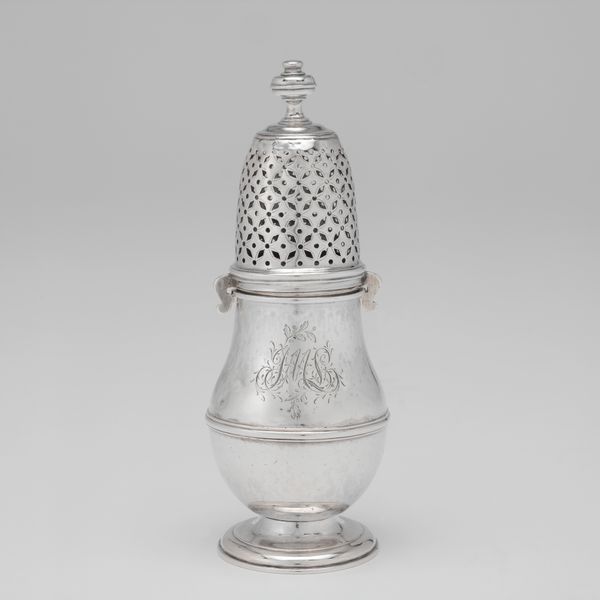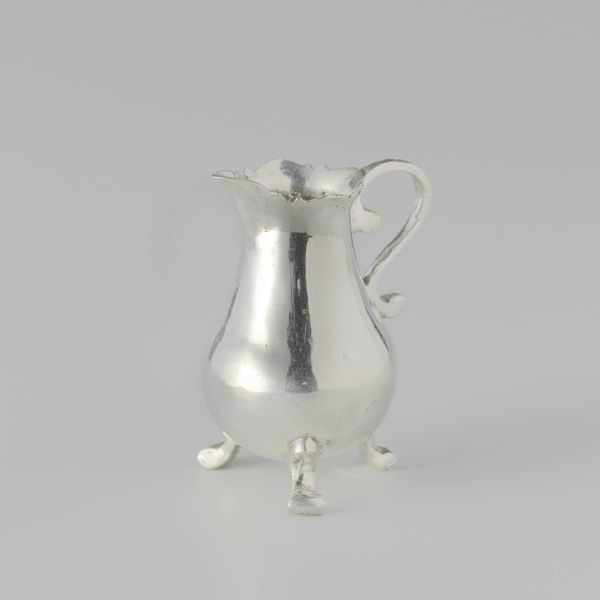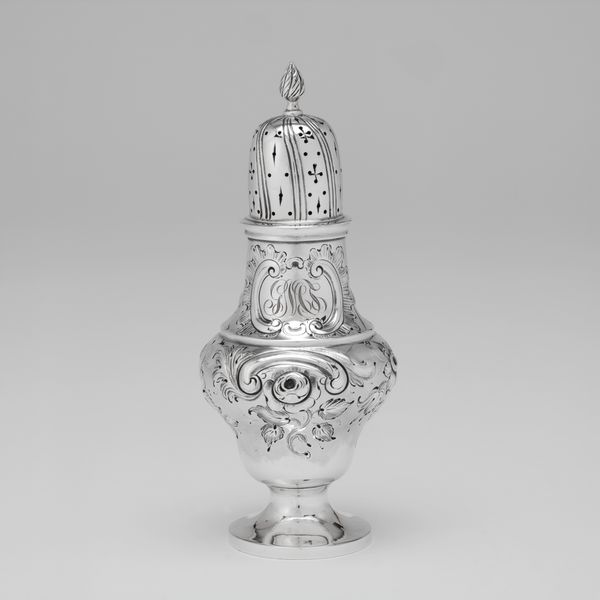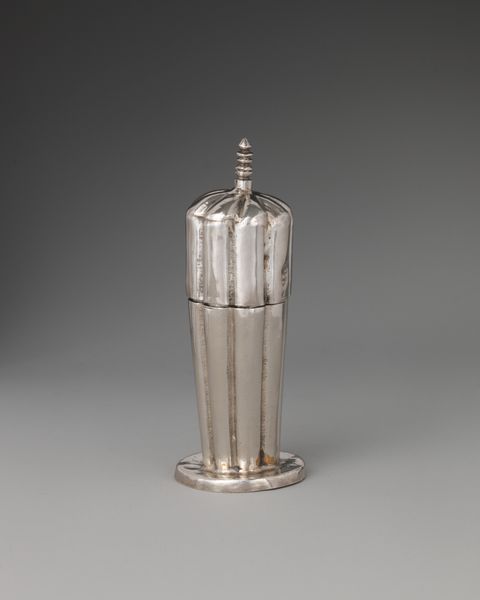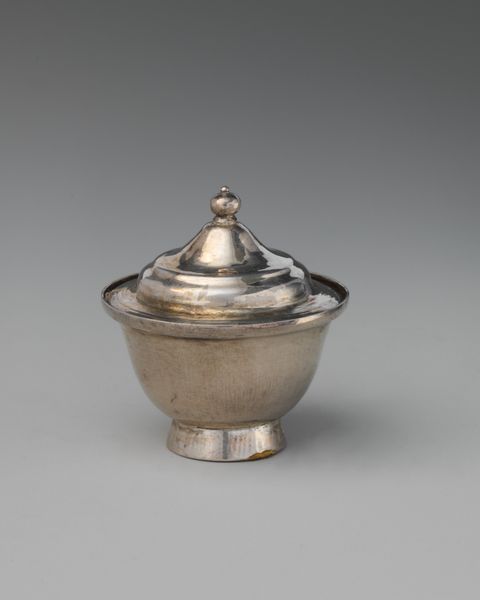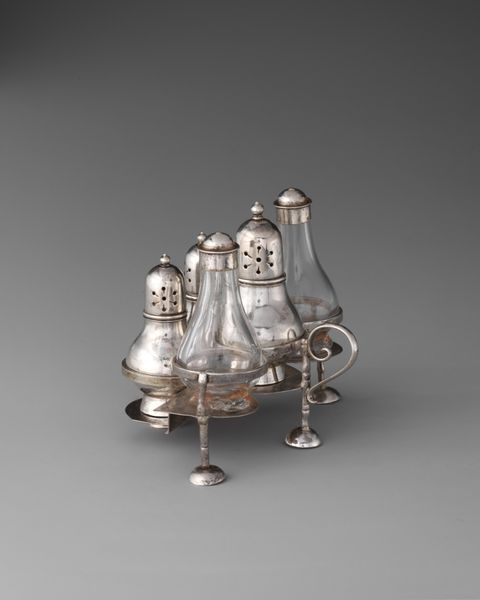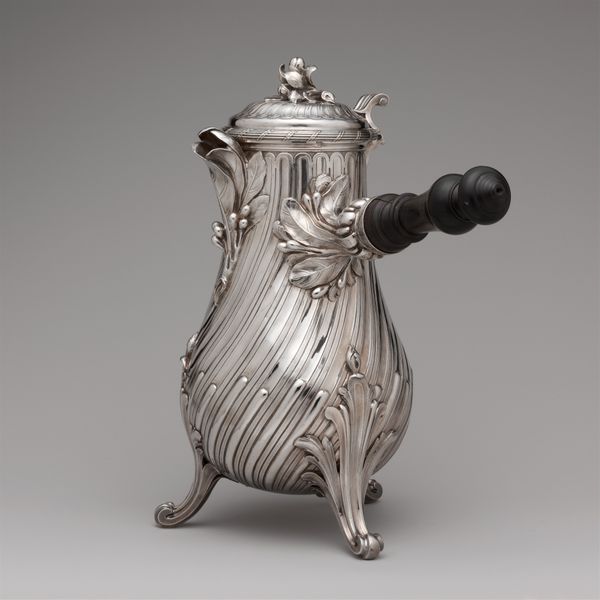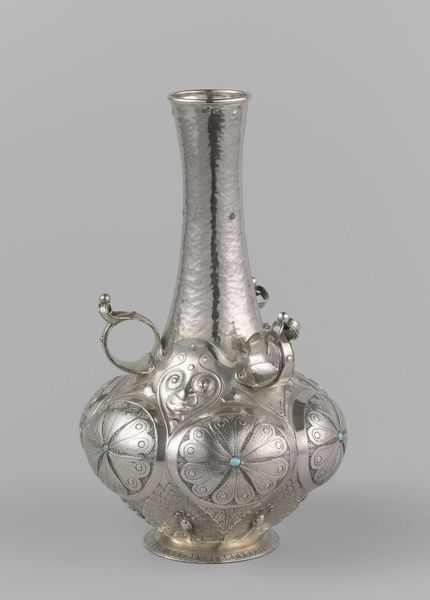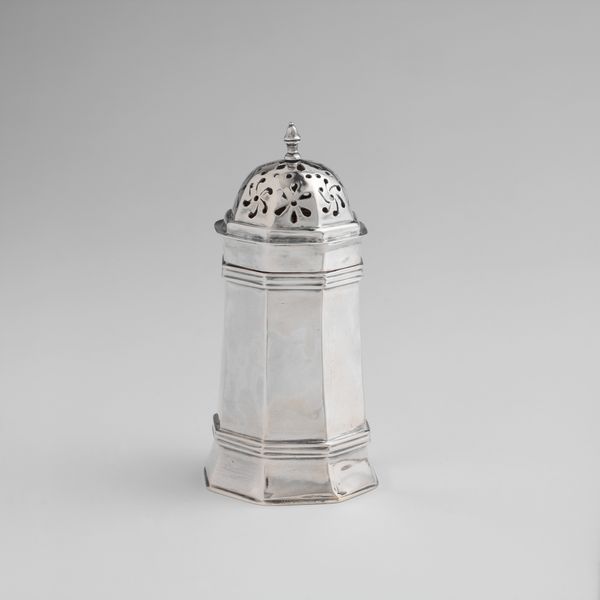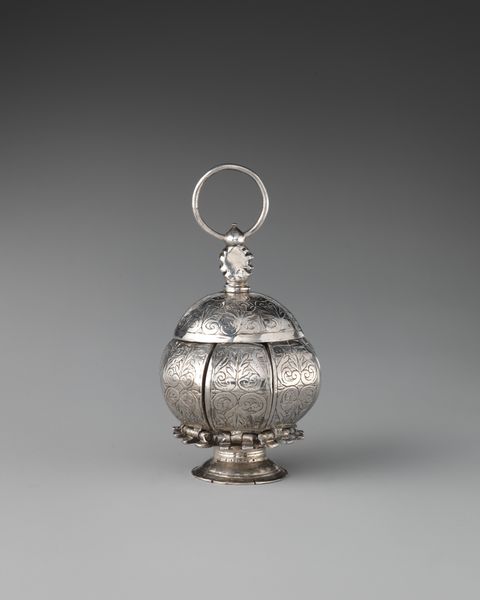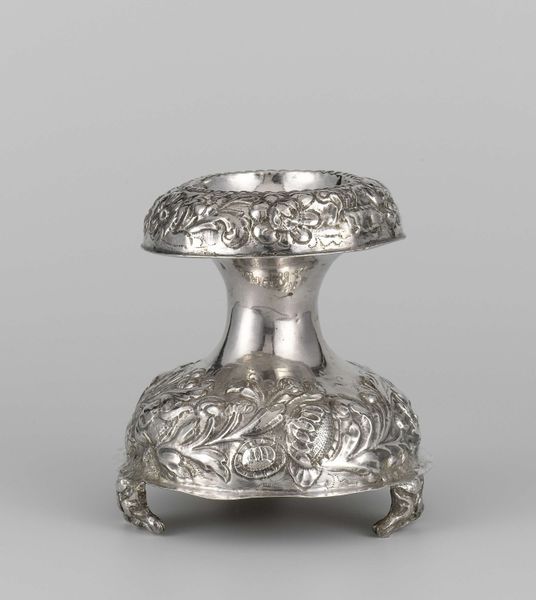
silver, metal, sculpture
#
silver
#
baroque
#
metal
#
sculpture
#
decorative-art
Dimensions: Height: 1 3/4 in. (4.4 cm)
Copyright: Public Domain
Curator: Let's discuss this Miniature Caster with Cover crafted between 1720 and 1723, currently held here at the Metropolitan Museum of Art. It's a delightful example of baroque decorative art in silver. Editor: It's undeniably elegant. Its small stature gives off this air of preciousness, but something about the lusterless metal also feels somber, like a memento mori for the dining table. Curator: Note how the form plays with contrast: the smooth, swelling body against the delicate perforations in the domed lid. This kind of refined dynamism is characteristic of the Baroque. What about the silver itself, its materiality—how does it speak to you? Editor: Well, silver at this time was intimately connected with wealth and display, naturally. Beyond status, consider labor. The careful tooling represents both craft skill and possibly obscured, subjugated hands involved in mining. How can we display its splendor responsibly? Curator: I see your point. And the baroque aesthetic undeniably carries this weight of power. However, look closely: the circular openings radiate around the cover, an arrangement also suggesting visual harmony and deliberate structure. Editor: True, it evokes the period's obsession with order. It's like containing wildness within defined borders. Does its small size diminish the social performance associated with pieces such as this? Curator: Intriguing thought! As the name states, these casters were typically made in full sizes to disperse spices on meals at dinner settings. This example suggests maybe this smaller model played a role in an intimate, more individualized display of wealth? Editor: Right! Or, it's playing around with these signifiers ironically, a playful jab. After all, material objects hold power, especially at the domestic scale of daily routines. They create customs. It's crucial we unravel them critically. Curator: Certainly a compelling narrative. Its delicate presence invites ongoing reflections about labor, privilege, and the language of visual forms. Editor: I'm leaving with the lingering feeling of being aware of everything in my surrounding environments as an interplay of politics, history, and aesthetics. I hope the guests share that sense.
Comments
No comments
Be the first to comment and join the conversation on the ultimate creative platform.
